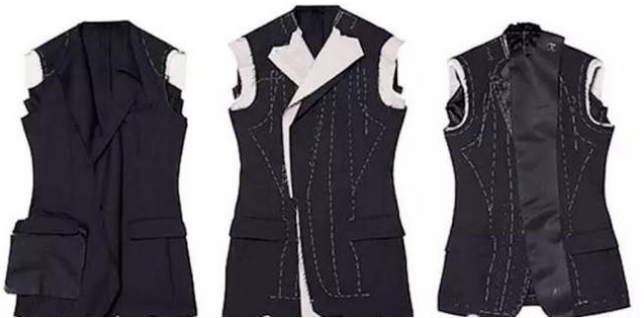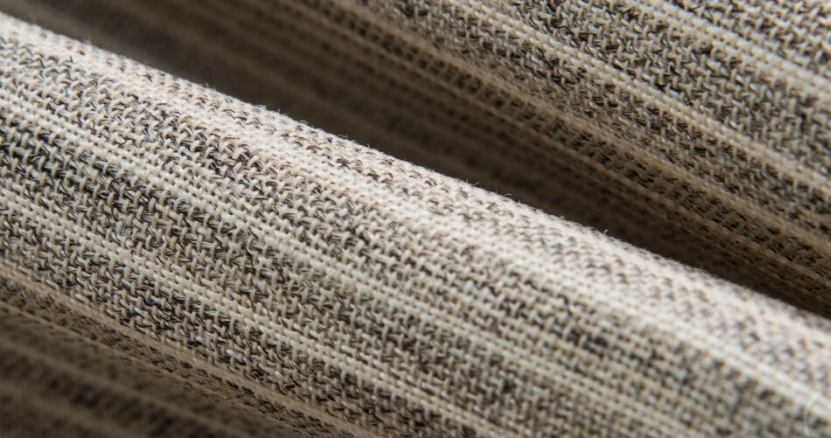How do I use lining for a high-fashion suit
2022-09-26.
In suit making, how do you cut the lining to make the suit shape better and make it easier to make?
Today we're sharing four benefits of using a combination of lining examples and dressing seams for a wool lined suit!
Example of using a lining
The lining is about 0.2cm smaller than the body piece, and the side pieces are 1.5cm smaller than the trim in the overlap, collar, shoulder line and sleeve cage areas.
The lining piece is smaller than the garment piece so that the adhesive does not adhere to the press when gluing. When sewing the back side seam, this area is gentler.
This method is relatively simple, very widely used, especially for thin clothing, can increase the sense of thin clothing predecessor stiffness. The disadvantage is that after the waist is closed, the belly is cut and then the lining is padded.
The lining is about 0.2cm smaller than the cut of the body, the side pieces are 1.5cm smaller than the cut edge, and the pockets are cut 0.7cm smaller at the top and bottom and notched.
The advantage of this cut is that the inlay is gentler when sewing the pockets together, saving time and eliminating the need to cut the lining, but the cutting and gluing process requires great precision.
The lining is about 0.2cm smaller than the cut edge of the front piece, the side piece is about 1.5cm smaller than the side stitching edge, and the barge is 1.3cm smaller than the front lapel edge.
This method of cutting allows for a thinner stop and a lighter, more elegantly shaped stop after the barge has been folded, but as above requires greater accuracy in the cutting and gluing process.
The lining is about 0.2cm smaller than the body piece, the side pieces are about 1.5cm smaller than the side piece stitching edge, the top and bottom of the pocket are about 0.7cm smaller, and small pieces of lining are cut out.
This method is used when the front piece is lined with inserts on the door edge and also requires precise cutting.
Most bespoke suits are sewn with a combination of wool lining, what is so good about this process?
We will now explain the quality of the suit in terms of the good performance of the wool lining.

1. Good flexibility and elasticity
The combined woollen lining is made of animal fibres and has a good flexibility, such as a ponytail lining or a core ponytail lining with a very good resilience.
Therefore, the elasticity of the combined woollen lining is very prominent, which is more conducive to the recovery of the fabric to its original state due to the stretching of the fabric by the movement of the suit's predecessor.
2. Suitable stiffness
The combined woollen lining is made up of multiple layers of black charcoal lining, ponytail lining and chest fleece, which are already much stiffer than a single layer of bonded lining, plus animal fibres (such as the hair in the black charcoal lining and cow hair) have a good stiffness so that the combined woollen lining has a certain degree of stiffness and plays its part in stiffening the front of the suit and the shoulders.
3. Reliable dimensional stability
After shaping and resin finishing, the combined woollen lining is more stable in size after dry-cleaning and washing, with less change, and the shrinkage rate of the fabric can be maintained basically the same, and the follow-through is particularly good.
4. Fitted drape
The combination of woollen lining designed according to the provincial design of the suit, sewn on the predecessor and the piece of clothing to form a whole, three-dimensional effect is strong, full and close to the body, the fabric maintains its own characteristics, good drape.
5. Credible breathability and health benefits
Although the combined woollen lining is made of at least three layers of material stacked together and sewn together, it is not stuffy and breathable as it uses mostly natural fibres, mainly plant and animal fibres, while the free formaldehyde content does not exceed 300mg/kg, causing no obvious harm to the human body.

In general, the combined woollen lining is like the skeleton of the suit, supporting the fabric and meeting the needs of the suit's predecessor in terms of stiffness, stretch, fullness, drape and feel.

